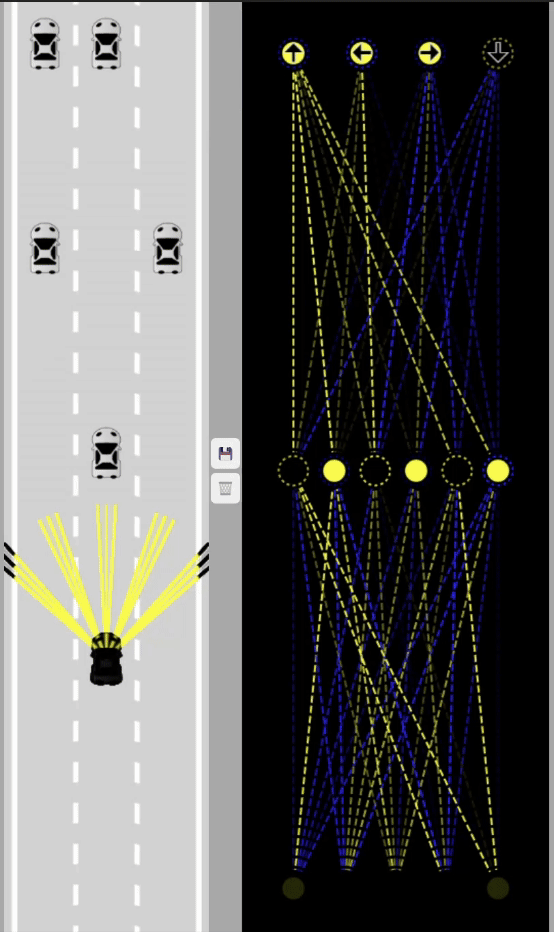Self-Driving Car Simulation in JavaScript
Project Description:
This project aims to create a fully interactive self-driving car simulation using JavaScript, focusing on the implementation of neural networks for autonomous driving decision-making. By simulating road environments, traffic conditions, and artificial sensors, this simulation provides a detailed insight into the workings of autonomous vehicles. The project covers a wide array of components, from basic road definitions to advanced neural network integration, offering a deep dive into the challenges and solutions in developing self-driving car technologies.
Road Definition:
The simulation starts with a detailed road layout that includes lanes, curves, intersections, and traffic signs, providing a realistic environment for the self-driving car to navigate.
Artificial Sensors:
We equip the self-driving car with simulated sensors, mimicking real-world devices like LiDAR and cameras, to gather data about its surroundings and make informed navigation decisions.
Collision Detection:
Ensuring safety, our collision detection system allows the car to identify and avoid obstacles, crucial for both the simulation’s realism and the autonomous vehicle’s operational integrity.
Traffic Simulation:
A dynamic traffic simulation introduces other vehicles on the road, each behaving according to realistic driving patterns, adding complexity and requiring sophisticated decision-making from the self-driving car.
Neural Network:
At the core of the simulation is a neural network that processes input from the car’s sensors to make driving decisions. This network learns from various driving scenarios, continuously improving its performance.

Visualizing Neural Networks:
We provide visualization tools to see inside the “brain” of the self-driving car, offering insights into how it processes information and makes decisions.
Optimizing Neural Networks:
Exploring optimization techniques, we enhance the neural network’s efficiency and decision-making accuracy, ensuring a smooth and safe driving experience.
Fine-Tuning:
Through fine-tuning, we adjust the neural network to perform better in specific scenarios, improving the car’s adaptability and reliability.

Live Stream Variant:
An innovative addition to our project is a live stream variant of the simulation, allowing real-time observation of the self-driving car as it navigates various road conditions.
Achievements:
This project not only showcases the potential of JavaScript for complex simulations but also contributes significantly to the understanding of autonomous vehicle technologies. It serves as a valuable educational tool and a foundation for further research in the field.
Future Scope:
Looking forward, we aim to integrate more advanced AI techniques and explore real-world applications of our simulation, pushing the boundaries of what’s possible in autonomous vehicle development.
This project stands as a testament to the power of modern web technologies in simulating and advancing autonomous driving solutions, offering insights and opportunities for enthusiasts and professionals alike.